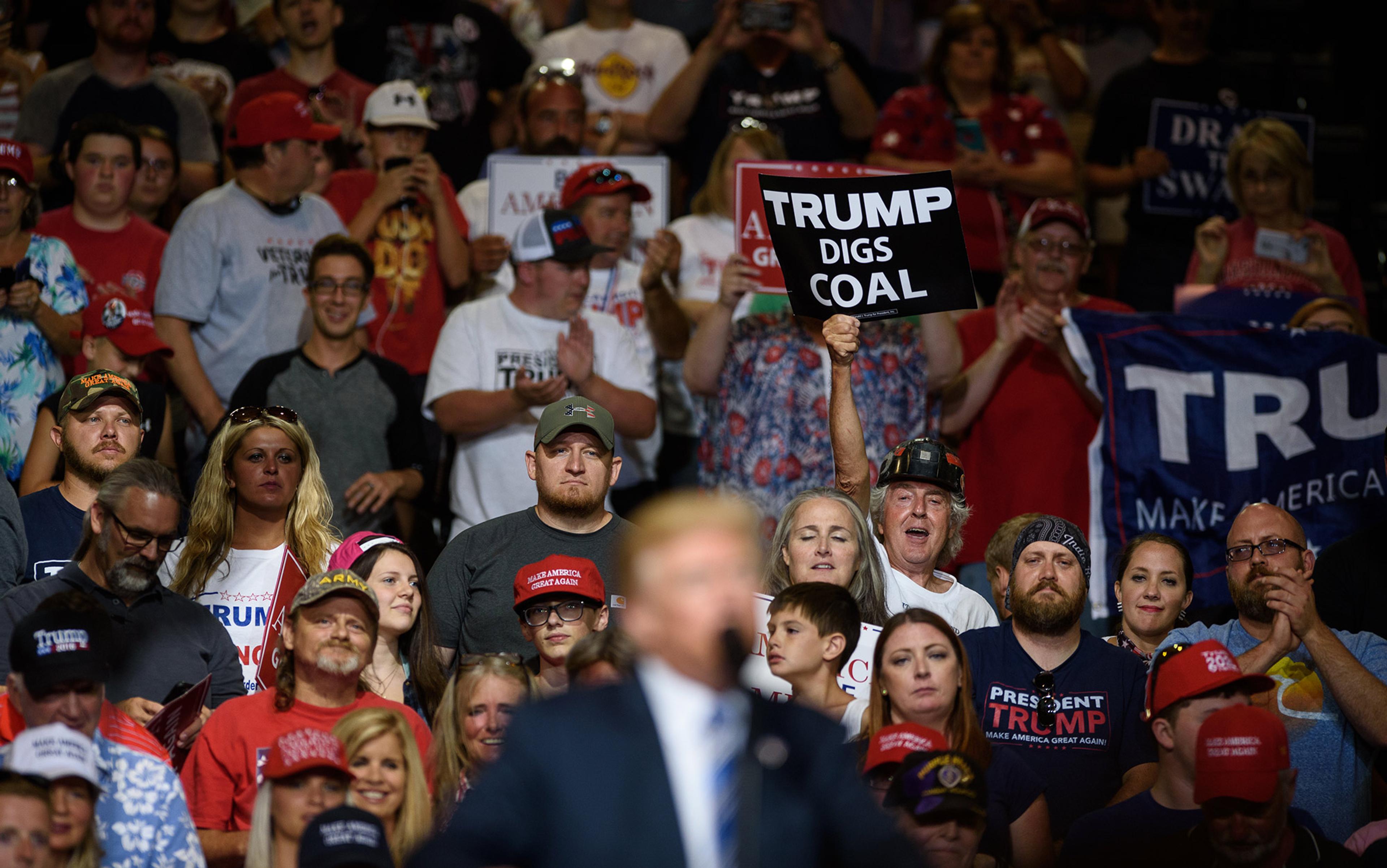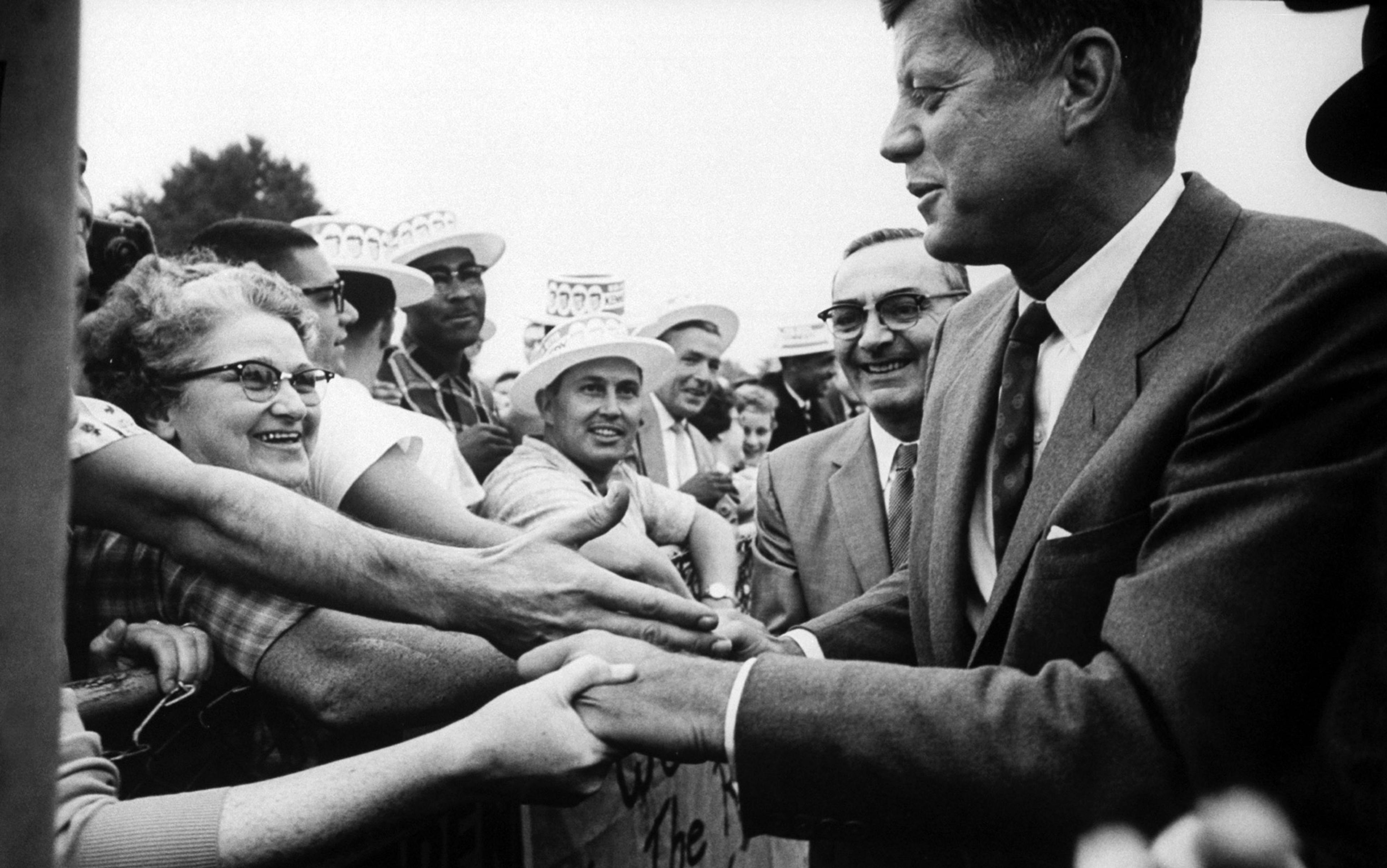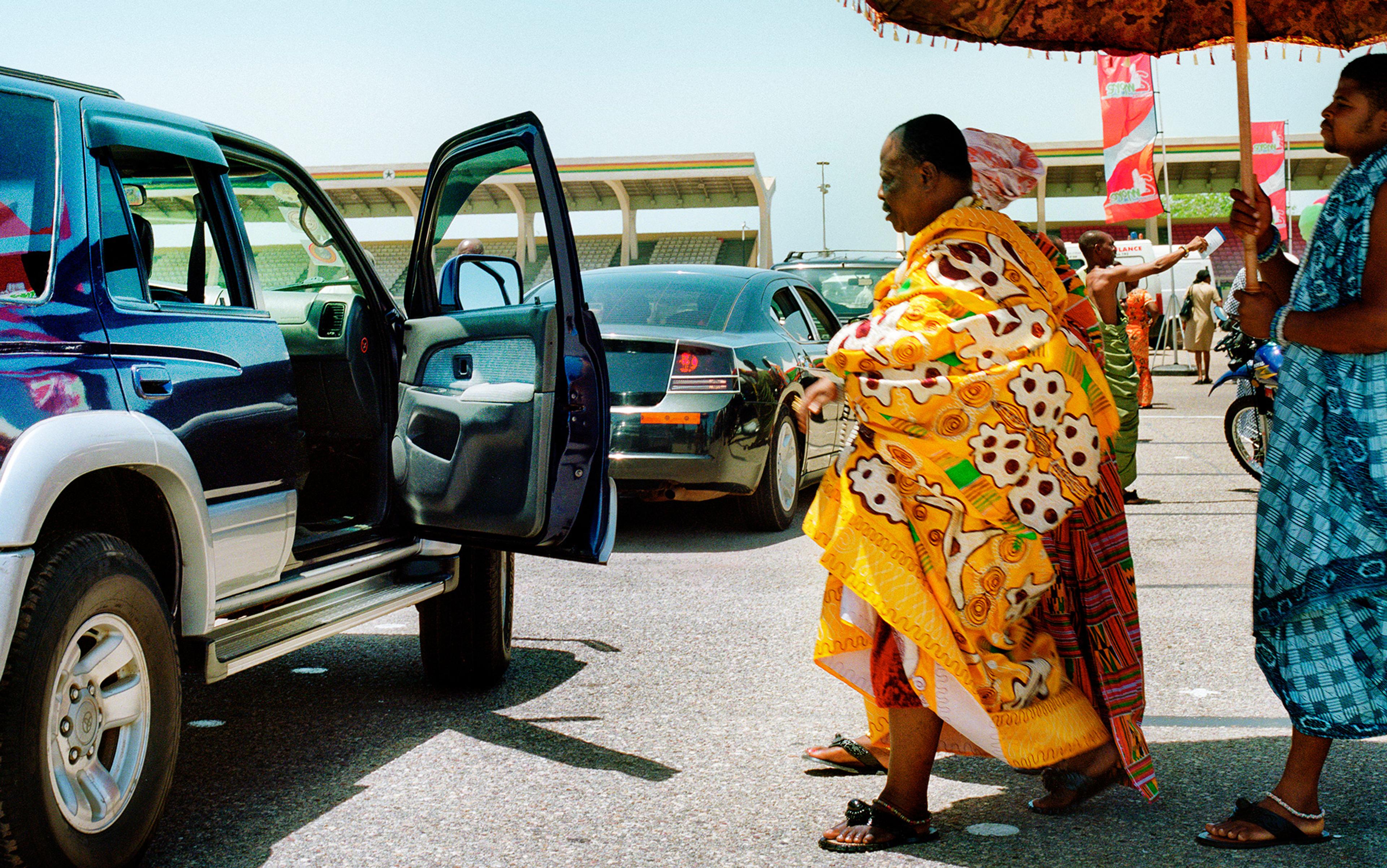What drives political change – culture or economics? The surge of the Right in the United States and Europe in the past two years has renewed debate on this important question. On one side, the cultural determinists attribute Donald Trump, Brexit and the rise of European populist movements to nativism, anti-immigrant sentiment and, in the American heartland, lingering racism. On the other side, economic determinists put the blame on economic inequalities and anxieties deriving from austerity policies, globalisation and deindustrialisation.
The trouble with this debate is that it is often not possible to disentangle the economic from the cultural causes. To evaluate economic outcomes, people necessarily draw on pre-existing conceptions of identity and cultural frames – narratives about how the world works and what is fair. At the same time, cultural sensibilities can grow more salient, and more readily expressed in the political arena, following economic struggle. Furthermore, lobbies and interest groups have an obvious stake in ‘priming’ those cultural tropes or traits that increase the appeal of their preferred political candidates or policies.
The distinction between ‘culture’ and ‘economics’ is closely related to a division in the field of political economy: there are scholars who highlight the primacy of ‘ideas’ and there are those who emphasise ‘interests’.
Both in political science and economics, vested interests representing elites, lobbies, other pressure groups, or voters at large are the cornerstone of contemporary frameworks of political economy. The emphasis on interests provides social scientists with a powerful tool with which to analyse the political determination of policies and institutions. Interests help to explain why foreign trade is often restricted – so it benefits well-organised domestic producers. It helps to explain why regulation tends to favour incumbents at the expense of potential entrants – due to the influence of the regulated firms themselves (a phenomenon known as ‘regulatory capture’). It helps to explain why elites fail to develop their economies – to preserve their own in power.
The ‘interests’ approach competes with an alternative perspective – sometimes called ‘constructivism’. Constructivism, which is a less formalised and more open-ended approach, emphasises the role of ideas, norms and values in shaping preferences and interests.
In much of the field of political economy, the interests approach reigns. But the predominance of the interests perspective is puzzling when one considers the fact that policy arguments in the real world rarely rely on a naked appeal to narrow economic interests. Instead, political entrepreneurs make their case in favour of new policies by trying to convince the public that their proposed change is better for the whole society. They might emphasise identities, values or some normative principles such as fairness or freedoms. So in actual public discussions what we might call ‘ideational politics’ seems at least as important as interest-based politics.
The reliance on interests in modern political economy is of recent vintage. Not just classical economists such as David Ricardo and Karl Marx, but also some of the 20th century’s most influential economists – John Maynard Keynes and Friedrich Hayek, for example – considered ideas as causing political change. Keynes even observed that ‘it is ideas, not vested interests, which are dangerous for good or evil’. So the efficacy of ideas has been central to influential accounts of institutional and policy change in history. Ideas helped to make possible the prohibition of slavery in the US, women’s rights and the suffragette movement, and the collapse of the socialist model the world over. Ideas also enabled policy changes such as welfare reform, deregulation and tax cuts in the US, and privatisation in Thatcherite Britain.
Dialogue between the ‘interests’ proponents and the ‘ideas’ advocates falters over a difference in method. Interest-based theories tend to rely on rational-choice approaches, associated with economics. Constructivists typically find rational choice and quantitative methods unappealing, and prefer more discursive methods. But these divergent methods should not obscure a more coherent, integrated understanding of the relationship between ideas and interests in political change.
First, interests need not be defined in purely economic terms. People care about their identity, values and self-worth in addition to their pocketbook. It makes little sense to think of interests only as behaviour driven by short-term financial gain. Second, ideas and interests can also be difficult to distinguish from each other: policy ideas are frequently peddled by moneyed interests with a stake in the outcomes, and interests often form out of ideas about individual or group identity and how the world works. Third, the determination of culture and ideas, as well as the behaviour driven by them, is amenable to modelling approaches employed in rational-choice political economy. There is no need to apply standards of reasoning and rigour to the world of ideas that differ from the world of interests.
In a recent academic paper, we proposed a conceptual framework that integrates the political effects of ideas and interests. The model clarifies the analytical distinction between ideas and interests, and shows how rational-choice political economy methods can accommodate ideas. It highlights two different channels of ideational politics. First, ideas shape the electorate’s understanding of how the world works, which in turn alter its perceptions of the proposed policies and their outcomes. We call political entrepreneurship geared at altering public perceptions about the underlying state of the world ‘worldview politics’. The many examples of worldview politics include, for instance, investments made by the US billionaire Koch brothers in libertarian think tanks and research institutes, as well as the active role of the financial sector in promoting the idea that ‘what is good for Wall Street is good for America’. This brand of ideas is perhaps closest to what Keynes and Hayek had in mind when talking about the importance of ideas in policy determination.
A second form of ideational politics relies on shaping or priming voters’ self-identity – perceptions about who they are. Individuals have a multiplicity of identities – revolving around ethnicity, race, religion or nationality. Ideas can not only alter the salience of different identities, but also help to construct new identities. Sending messages about who is a native or an outsider, for example, or disseminating stereotypes about racial and religious minorities, harping on patriotism and national identity, and framing policy issues in explicitly identity terms can all manipulate the political meaning of an identity. These strategies in turn can catalyse or block political change. We call this second type of ideational politics ‘identity politics’.
Consider a standard political economy model where the prevailing interests of the median voter (who is low-income) determine policy choice. In this context, a high-income political challenger faces a difficult task: how to push through a policy, such as a tax cut, that benefits the high-income minority at the expense of the low-income majority? With the (lower income) majority on his side, the political incumbent cannot be easily defeated. The new policy will not get adopted. Ideational politics provides a potential solution to this impediment. A political entrepreneur (or an allied ‘political-ideational complex’ of think tanks, pundits and partisan media) can develop and disseminate ideas that alter either the worldview or the identity of the voters (or both).
Memes are the concrete vehicle that channels ideas developed by the politician for the political marketplace
With the aim of unseating the incumbent, a political entrepreneur allocates resources towards the search and discovery of ‘memes’ that catalyse ideational politics. The notion of a meme was introduced by the evolutionary biologist Richard Dawkins in The Selfish Gene (1976) when discussing how some cultural ideas and rituals spread very easily – through rhetoric, slogans, speech or gestures. A meme is some combination of cues, narratives, symbols or indeed any choice of communication disseminated by the political entrepreneur such that exposure to it either shifts views about how the world works or makes an identity salient. Memes are the concrete vehicle that channels ideas developed by the politician for the political marketplace.
Consider for example the politics of austerity. The economic historian Robert Skidelsky, among others, has argued that fiscal austerity and balanced budgets resonate with the public because people think of the government’s finances as similar to their own household’s finances. Every household has to balance its books, and so does the government. Germany’s chancellor Angela Merkel expertly deployed the meme in 2008 in a speech attacking deficit spending:
The root of the crisis is quite simple. One should simply have asked a Swabian housewife, here in Stuttgart, in Baden-Württemberg. She would have provided us with a short, simple and entirely correct piece of life-wisdom: that we cannot live beyond our means. This is the core of the crisis … Then why is the world in this difficult place? Well, we have too often put our trust in experts that were not really experts … When we come together now to think about how one should answer these new global questions, we should put less faith in self-proclaimed experts, and instead follow one principle: the principle of common sense.
More generally, we have two kinds of memes. If a meme affects a voter’s belief of how the world works, we label it a policy meme, which results in worldview politics. If a meme affects a voter’s sense of who he or she is, it is labelled an identity meme, and it triggers identity politics. The political entrepreneur’s decision of whether to focus on identity or policy meme (or both) depends on what is politically advantageous.
Take identity politics first. Identity politics has the potential to alter the political status quo by transforming a low-income voter’s preferences ex-post (or after the event): the median voter might now be willing to vote for a (rich) political challenger with whom he shares an identity marker, such as religion or race. In other words, it can raise the significance of one type of identity (religion or race) over another (class or region). If successful, the political entrepreneur drives a wedge between a low-income individual and the status-quo policy of, say, transfers from the rich to the poor. Therefore, the identity meme introduces a trade-off between income and identity for the low-income voter. Even though such politics is divisive, it enables the challenger to potentially overthrow the incumbent, by helping to cobble together a sufficient number of low-income voters with whom he shares an identity.
A policy meme works in a similar manner, but by changing voter perceptions of how the world works. It aims to persuade the (low-income) voter that the state of the world has changed. In this reversal, a policy that (previously) hurt the interests of the median voter is now in his interest. Unlike identity politics, worldview politics does not create a new line between insiders and outsiders. But changes in worldviews can be harder to bring about, unless structural conditions such as the state of the economy, levels of unemployment or inflation help to make people receptive to new narratives about how the world works.
Our model allows full-spectrum ideational politics. It works for policy memes, identity memes and memes that combine both. An example of a meme that draws on both policy and identity is Trump’s statement: ‘I will build a great, great wall on our southern border, and I will make Mexico pay for that wall.’ This meme has elements of a policy response (building a wall), while also emphasising identity (natives versus immigrants). Similarly, during the 2006 Venezuelan election, Manuel Rosales attempted to unseat President Hugo Chávez by promising to issue what he called a ‘Mi Negra’ (ie, my dark-skinned woman) card. The card would directly transfer oil revenues to the poor. Rosales’s statement combined policy and identity memes in one initiative.
Identity and worldview politics share an interesting complementarity. For instance, in order to get elected, a political entrepreneur can choose to try to make identity salient. However, once identity is made salient, it is much easier for the political entrepreneur to also alter an individual’s views about how the world works. In other words, either kind of ideational politics increases the return to the other kind. To see why this might be the case, suppose that a low-income person gets utility from identifying with and sharing an identity with the high-income identity group (eg, whites). In the presence of this association effect, the utility from belonging to the rich identity group is increasing in this group’s relative income. So for example, low-income white voters might be willing to support a policy (eg, financial deregulation) that benefits the rich, white minority, if its adoption gives them an indirect advantage through association with the now even richer white beneficiaries of this policy.
We can expect more ideational politics in low-income regions and countries than in high-income ones
The reinforcing effect of identity and worldview politics finds further support from what we call the ‘income-identity trade-off’. All voters who share an identity with the political challenger want to support him because of the tug of shared identity. However, supporting the pro-rich policies of the political challenger could economically hurt the low-income voter. Given this trade-off, some low-income voters might remain immune to the pull of a shared identity. This would have lowered the incentive to a political challenger from taking the effort of trying to discover an identity meme in the first place. What prevents this from happening is that the political entrepreneur knows that these recalcitrant low-income voters can be targeted using a combination of policy and identity meme (where neither would have been sufficient to switch voter allegiance on its own).
This might help to explain why an increase in identity polarisation often comes with a greater prevalence of policy memes. Seemingly disparate identity memes such ‘Barack Obama is a Muslim’ might increase the likelihood that there will also be a successful policy meme such as the austerity-related ‘living within our means’. For the same reason, we should expect to see more ideational politics (of both kinds) in low-income regions, countries and sovereign states than in high-income ones. In Russia, Venezuela and Turkey, over the past decade, populist policy themes and shrill nationalism aimed at stigmatising minorities or foreigners rose together.
Importantly, identity and worldview memes do not prevail equally across all subgroups of the population. Political entrepreneurs target these memes toward the electorally critical subgroup. Our model predicts that identity polarisation and support for policy memes will both see their greatest rise within the lower- and middle-income group of the majority-identity group. These are the potential switchers to whom the memes will be targeted. We should not expect those memes to operate as strongly among the wealthy who belong to the majority group or the minority-identity group of all incomes.
Increased inequality raises the reward to the rich from successful ideational politics. The returns from discovering a policy meme that persuades the median voter, for example, that lower taxes are in the interests of not only the rich, but also the low-income median voter are much higher when inequality is high. Similarly, an effective identity meme that catalyses identity around issues such as gay marriage, women’s rights and immigration can also serve as a ‘wedge’ giving low-income voters a reason to vote for the high-income party. As one team of economists concluded in 2015: ‘Despite the large increases in economic inequality since 1970, American survey respondents exhibit no increase in support for redistribution … demand for income redistribution in the US has remained flat by some measures and decreased for others.’ This is remarkable. And it happened, as our research framework suggests, thanks to the role of ideas as a catalyst for policy change. The elite, along with an allied ‘political-ideational complex’ (including academics, think tanks and talk-radio), successfully disseminated the worldview that rising inequality was an inevitable byproduct of structural changes in the global economy, which in turn necessitated the adoption of financial deregulation, low capital-income taxes and the embrace of globalisation.
Ideas and interests both matter for political change, and the two feed into one another. On the one hand, economic interests drive the kind of ideas that politicians put forward. As Kenneth Shepsle, professor of government at Harvard University, put it in 1985, ideas can be regarded as ‘hooks on which politicians hang their objectives and further their interests’. However, ideas also shape interests. This happens because they alter voter preferences and/or shift their worldviews ex-post, in both cases shifting rankings over policy.
Ideas not only constrain interests, they can also hurt the very interests that helped to shape them. For example, financial interests’ propagation of the virtues of austerity and budget balance might have had the unintended consequence of helping to trigger Brexit – the institutional change with possibly the biggest blow against London’s financial interests in more than half a century – and the rise of populists in the rest of Europe. The promotion of trade agreements as highly beneficial to the entire US contributed to the election of the anti-trade Trump. In both cases, misleading cleavages or memes generated by previous power-holders lent themselves to a backlash.
Despite the 2008 financial crisis and the recession, financial interests in London continued to back fiscal austerity. Indeed, these interests played a key role in the dissemination of the ‘budget balance’ meme and the gospel of fiscal austerity. The ‘budget balance’ meme acquired such influence, establishing itself as a kind of orthodoxy, that even Labour-leaning policymakers found it difficult to resist. However, the actual implementation of fiscal austerity by the government (especially in the post-financial crisis world) arguably set the stage for Brexit, which is likely to seriously damage London’s financial sector. Recent work by the economist Sascha Becker at the University of Warwick in the UK and co-authors suggests that those voters who suffered most from fiscal austerity likely tipped the balance in favour of Brexit. The fiscal-austerity meme had limited the government’s ability to manipulate (on the policy front) in the face of a recession, which combined with the fact that a populace suffering from the financial crisis was vulnerable to memes about national identity and ‘taking back control’ with the Brexit vote.
Identity politics shapes perceptions of desired policy outcomes of the economic and political elite
Similarly in the US, the Republican Party (and the wealthy business interests that back it) have found it politically useful to disseminate memes and narratives that made identity central (eg, the ‘Willie Horton/weekend passes for felons’ anti-Democrat ad campaign of 1988, or the ‘welfare queen’ meme used by Ronald Reagan since the 1970s). The stoking of racism was one way to maintain support of the white middle and lower-middle classes who would have likely been economically better off under Democratic administrations. But the salience of racial identity made the Party eventually vulnerable to a takeover by Trump, with very different ideas on trade and immigration than the Republican establishment. If carried out, Trump’s nativist policies would harm the business interests that have traditionally backed the Party.
In more than one way, ideational politics carries a risk of unintended consequences. Money and organisational resources help, but they do not mean that vested interests can craft policy narratives and appeal to identity in ways that produce guaranteed outcomes. As we are consistently reminded, political outsiders sometimes introduce memes that draw on and mobilise popular attitudes and upset moneyed interests. Though the term is used more often in reference to minorities, identity politics also shapes perceptions of self-interest and desired policy outcomes of the economic and political elite.
Reagan’s tax reform provides an illustration. Business elites originally opposed the personal income cuts that he advocated. They worried about the adverse fiscal implications. Over time, theories of supply-side economics moved them to place greater weight on the incentive and supply effects, and many turned into enthusiastic advocates of across-the-board tax cuts. In South Korea and Taiwan through the late 1950s, political leaders viewed their objectives largely in military and geopolitical terms. This dictated inward-looking economic policies. Once they redefined their strategy as building strength through exports, economic goals began to loom much larger and their policies changed dramatically. Any explanation that relies on the importance of vested interests raises the question of where powerful groups get their ideas about their interests, and if they have soundly assessed what those interests are in fact.
Since ideas and interests both feed into each other, it can be difficult to distinguish them, empirically. The porous boundary between ideas and interests, and their dynamic relationship with one another, plagues much of the case-based political economy scholarship highlighting the role of one versus the other. If challenged, most scholars claiming supremacy for either ideas or interests, would be hard-pressed to persuasively distinguish between the two – which leaves their conclusions open to alternative interpretations.
For example, Charles Calomiris and Stephen Haber have argued in the book Fragile by Design (2014) that the financial crisis of 2008-9 resulted from an alliance of interests between big banks and community groups. The former wanted lax regulation while the latter wanted cheap housing credit for low-income groups. Their argument seems to be about vested interests. But one is left wondering why community groups such as the now-defunct Association of Community Organizations for Reform Now (ACORN) bought into a worldview that favoured leveraging poor households with excessive amounts of debt that they might not be able to service down the line. Conversely, ideas-based accounts of Germany’s advocacy of austerity policies in the eurozone – eg, Mark Blyth in Austerity: The History of a Dangerous Idea (2013) – downplay the structural role of Germany as a creditor nation with close to full employment, leaving the country with much to gain and little to lose from such policies. If a lobby pushes a particular policy, is that because it has a vested interest in that policy or because of ideational forces that shaped its understanding of where its interests lie? History shows it is often not an easy question to answer.
In the very short run, it is all about interests. In the long run, it is all ideas
Nevertheless, it should be possible to draw an empirical distinction between ideas and interests. In some instances, interests rule. In such cases, it is easy to draw the mapping between the policy choices made by an interest group and its ex-ante (or before the event) preferences or characteristics. On the other hand, we can attribute policy decisions to ideational politics, if they have been catalysed by the introduction of memes and narratives in the political arena. Such a distinction draws on strengths of both the constructivist and the political-economy models. It recognises the constructivists’ insights on how ideas shape preferences and worldviews. It also incorporates the obvious strength of political-economy models, which link behaviour and agents’ occupation, industry, income group or other predictive characteristics.
Therefore, empirically evaluating whether ideas or interests are the primary driver of a policy change relies on our ability to assess whether it is the ex-ante or ex-post salience of identities and worldviews that is important. We say that interests are key if identities and worldviews have been baked into the group’s preferences well before the policy choice. However, ideas can possibly intervene to transform these identities and worldviews. Therefore, a broader implication of the political economy of ideas is that today’s ideas become tomorrow’s interests. In the very short run, it is all about interests. In the long run, it is all ideas.
For those who view politics in terms of a narrow and static notion of interests, the electoral support for Trump, Brexit and other populist movements seems to pose a puzzle. It seems as if many poor people are voting against their self-interest. But the puzzle is more apparent than real. It is rooted in a habit of thinking of interests only in economic terms, and also as fixed. Trump’s former chief strategist Steve Bannon understood well that interests are malleable. With the right message and framing, Bannon noted in 2013, you could change the political calculus by shaping popular perception of self-interest: ‘Trade is No 100 on the [Republican] Party’s list. You can make it No 1. Immigration is No 10. We can make it No 2.’
What appears to be culture might be economics – the consequence of identity or worldview memes marketed by economic elites for their own self-interest. For example, Reagan used the imagery of a ‘welfare queen’ to attack unemployment benefits and the welfare state. So identity politics was being deployed by him to ensure that voters supported the Republican low-tax economic agenda. Similarly, what might look like economics might be shaped by cultural predispositions that provide voters with their interpretive frameworks – such as Merkel’s celebration of the ‘Swabian housewife’ when making the case for austerity.
Defeating autocratic and nativist political movements will likely require strategies based on both ideas and interests. As we have seen in recent elections, proposing policies that are better suited to the economic needs of middle- and lower-income voters will likely not be enough. Successful challengers will also need to come up with narratives that help to reshape peoples’ worldviews and identities.






